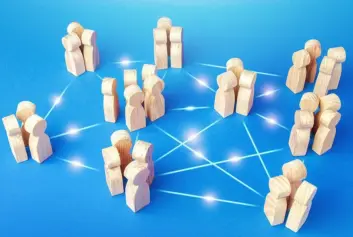“Lift and shift” is a strategy for migrating from one technology system to another without consideration for redesigning the experience or related processes.
While a “lift and shift” implementation approach is often seen as the quickest or easiest way to migrate to a new learning management system (LMS), it is far from the best approach. Future-forward organizations realize an LMS implementation project may require making adjustments beyond implementing a new technology (i.e., rethinking outdated business processes, re-evaluating the use of complementary software, etc.), but will ultimately result in a more optimal experience for their end-users and scalable solution for their administrators than a “lift and shift” approach allows.
If you are not already convinced, this post will explore the key reasons it is important to avoid a “lift and shift” LMS implementation approach.
1. User Experience: One Chance to Make a First Impression
During a “lift and shift” implementation, organizations are hyper-focused on migrating their data and processes to their new platform. The fast-paced cadence of an implementation can sometimes detract focus from the bigger picture and often, user experience falls into this category. When users access a new system for the first time, they expect it to be intuitive, engaging, and easy to navigate. Organizations that have been using a legacy learning management system for a long time, often have a user interface and experience that is out-of-date and out-of-sync with how learners engage. Lack of functionality and capability could account for some of the disconnect, but it could also be attributed to a lack of attention and focus on keeping the user experience modern and intuitive.
If you are planning a true “lift and shift” approach to user experience and your new system is not designed with these ideas in mind, you may lose your chance to engage your audience and keep them coming back for more.
An LMS implementation is the perfect time to assess how to leverage your technology more strategically to best engage your stakeholders and update your user experience with a design that capitalizes on the features your new learning management system provides.
2. Outdated Data
Typically, a “lift and shift” implementation approach does not allow time to analyze and update data prior to migration. However, by migrating unnecessary or outdated data, you risk re-creating some of the same challenges and pain points from your legacy system in your new learning management system. It is common for legacy data to be overwhelming, outdated, and unnecessary for future use. In order to provide a clean experience for users and implement a system that is easy for your administrators to manage, it’s important to evaluate your historical data and only migrate what is truly necessary for the future.
A couple key points to keep in mind:
- Often, the root cause of issues and support tickets for an LMS can be tracked back to the reliability of the underlying data. By taking the time to assess the issues that users have had in the past, you will be better equipped to identify and address potential data issues during migration and develop best practice processes for the future.
- You don’t have to migrate all historical data to your new learning management system. If the data isn’t relevant to users, and admins won’t need to frequently report on it, there could be an opportunity to host this data outside of your new system and build processes for admins to easily find that data, if needed (for example, if it’s necessary for auditing purposes).
While the effort to analyze and clean data prior to migration can be high, the benefit in the long-run is well worth the time and energy spent.
3. Complex Business Processes
Oftentimes, a “lift and shift” implementation approach does not allow time to evaluate and re-design complex business processes, which can lead to frustration for end-users and administrators who expected these areas to be improved in the new system.
One of the biggest reasons organizations purchase a new learning management system is to make work easier. Everyone sees during product demos how easy and intuitive it is to manage key business processes, and that’s a big part of what sells you on the product. Implementation is the best time to evaluate current business processes and determine how to improve the way you manage those processes within your new system. While the functionality is there to facilitate an improved process, it’s critical to take the time upfront to understand why the process is complex in your existing solution and consider the best options moving forward.
4. Administrative Burden
One unfortunate outcome of a “lift and shift” approach is that your administrators will continue to spend much of their time managing the system and processes as opposed to spearheading new initiatives, enabling new features, and offering strategic Learning Management guidance to your executive stakeholders.
The implementation of a new learning management system is the optimal time to evaluate how your administrators manage your user base and their day-to-day activities. Adopting a new system will require a change in the ways they do things as each system handles processes differently. It is important to focus on how your new learning management system can enable your administrators to work more efficiently, thereby giving them more time to focus on strategic initiatives.
5. Change Management
One of the benefits of a “lift and shift” implementation approach is that it allows organizations to migrate quickly from one system to another. However, a rapid system migration can also make it challenging to properly plan, communicate, and manage the upcoming change for your stakeholders.
One of the most valuable things you can do when implementing a new learning management system is to develop and execute a comprehensive change management plan. A strong change management plan ensures that learners, managers, admins, and all other relevant stakeholders are prepared for what is coming and aware of how the new system and processes will impact their roles and responsibilities.
Summary
Organizations that are the most successful in their LMS implementations do not rely on a “lift and shift” approach, but rather, embrace the change that may need to occur in these key areas. If you’re considering a move to a new platform, or an upgrade to your existing LMS infrastructure, contact Educe to learn how we can help you design an implementation plan to ensure your success.





